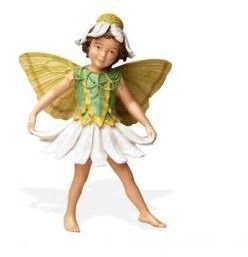Lesson on Retold and Remixed Fairy Tales and Folk Tales
Rationale for the Study
“The archetypes of fairy tales and legends can provide adolescents with answers, reassurance, and the opportunity to safely explore new thoughts, values, and self-identities. Retold fairy tales and legends allow young adults to both link with the past and create their own future by adding their voices to the old tales.” (Source)
Lesson Overview
**
Learning Area: English – Genre study
Topic: Retelling and Remixing of Folk Tales and Fairy Tales
Suggested Year Level: 5/6
Lesson Aim/Objective(s):
• To introduce the topic of folk tales and fairy tales and to challenge students to think of new ways to approach traditional and well-worn ideas.
• To introduce a range of books that retell/remix folk narratives and to ensure that each student has a book to read for the topic.
• To discuss the expectations for the unit of work.
Student outcomes:
• That every student chooses a book to study and records the book’s basic details in their reading response journals.
• That all students understand the concept of creating their literacy boxes.
• That some students will write initial ideas and feedback regarding their selected books, comparative analysis worksheets/hand-outs, and/or their literacy boxes in their reading response journals.
Lesson Preparation/Resources:
• A wide selection of books that depict retellings of folk tales and fairy tales, as well as sample of books that tell folk tales and fairy tales in the traditional format
• A list of books in this genre (retold folk narratives), including titles that may not be available in the classroom book display
• Class literacy box for the introduction (including items in the box)
• Comparative analysis worksheet/hand-out
• Instructions for student literacy boxes
• Class schedule for the topic
• Book record sheet for recording each student’s book selections
Teaching Notes
Basic Definitions
• Folk tale - a narrative that is primarily about people that may or may not have existed (or exist).
• Fairy tale - a narrative that often has magical characters and elements.
Allowances for Students
• Allow students with learning/reading difficulties and/or other issues to work with the graphic versions of the stories (e.g., Lauren Child’s remixed fairy tale/folk tale stories; Shannon Hale’s graphic novel, “Rapunzel’s Revenge”, etc).
Lesson Sequence
INTRODUCTION - Whole class
• Introduce the class literacy box. Ask students to guess what they think might be in the box. Get individual students to pick an item from the box, and then show it to the rest of the class, as well as name it. Once all the items are taken out of the box and exhibited, discuss what they think the topic is all about. Ask the students to name titles of folk tales and fairy tales that may be associated with each item from the box. Show book samples of original tales (if available).
• Ask students for definitions and elements of folk tales and fairy tales. Discuss how students think and feel about them. Encourage them to talk about why they like or dislike them.
• Lead the discussion toward retold/remixed folk tales and fairy tales. Ask students what they know about this genre.
EXAMPLES - Whole class
• Read blurbs or summaries from some of the selected books for the topic. Ask students to name the original stories.
• Show the other books from the display.
• Give students the list of other books from the genre.
INFORMATION - Whole class
• Explain to the students what this genre study will entail
• Reading the retold/remixed version and comparing with original or traditional versions
• Reading response journals
• Student literacy box – decorating, adding items, and presenting
• Encourage students those who may want to write their own retelling/remixing of folk narratives
• Discuss the class schedule for the topic
• Explain the expectations from this lesson
• Choose and record their book in their journals and on the book record sheet for the class
• Start reading their chosen books
• Begin initial impressions and feedback in their journals
• Conceptualize their student literacy boxes
GUIDANCE - Individual
• Answer students’ questions during reading time.
• Help students who might be having trouble selecting a book from the selection. Guide them in checking the book list and/or researching for alternatives.
• Guide students who may have questions or concerns regarding the comparative analysis and/or creating their literacy boxes.
SHARING and REFLECTIONS - Whole class
• Lead the class to have an initial discussion about their chosen books:
• “What is the title of your book? Why did you choose that book?”
• “What do you think is the original fairy tale or folk tale that your book is based on?”
• “What has happened in the story so far?”
• “Would you like to share anything from your reading response journal?”
CONCLUSION
• Talk about some of the interesting points of discussion and feedback
• Reiterate class schedule and remind students about the expectations for the next lesson
Source: author experience
